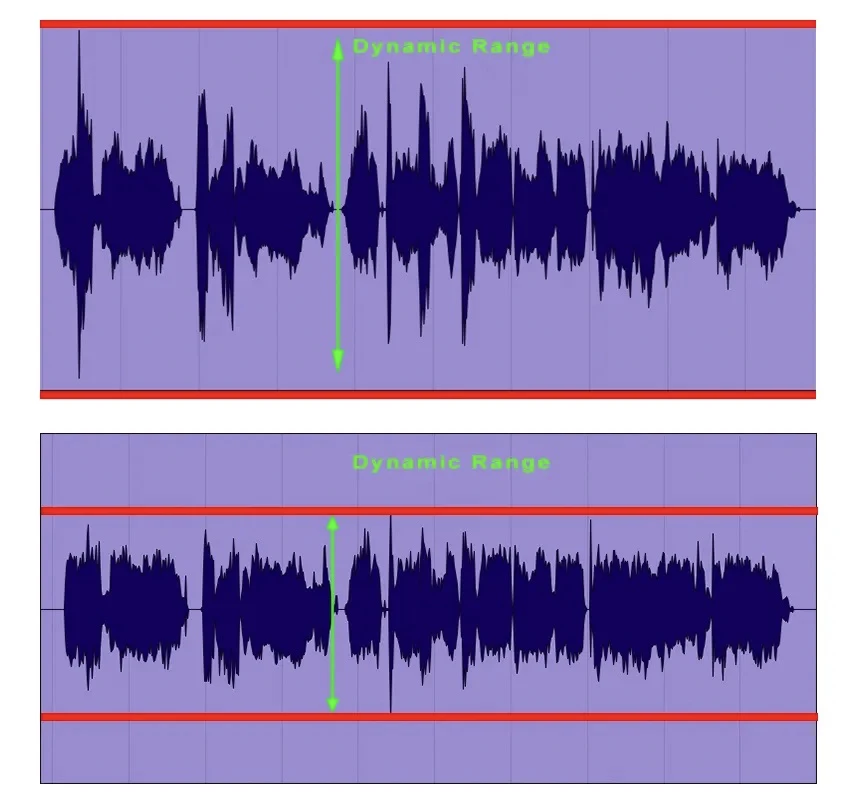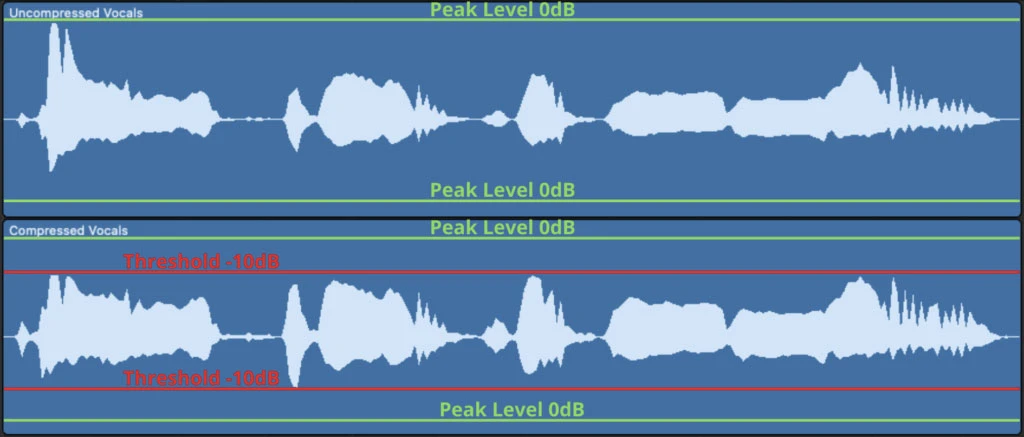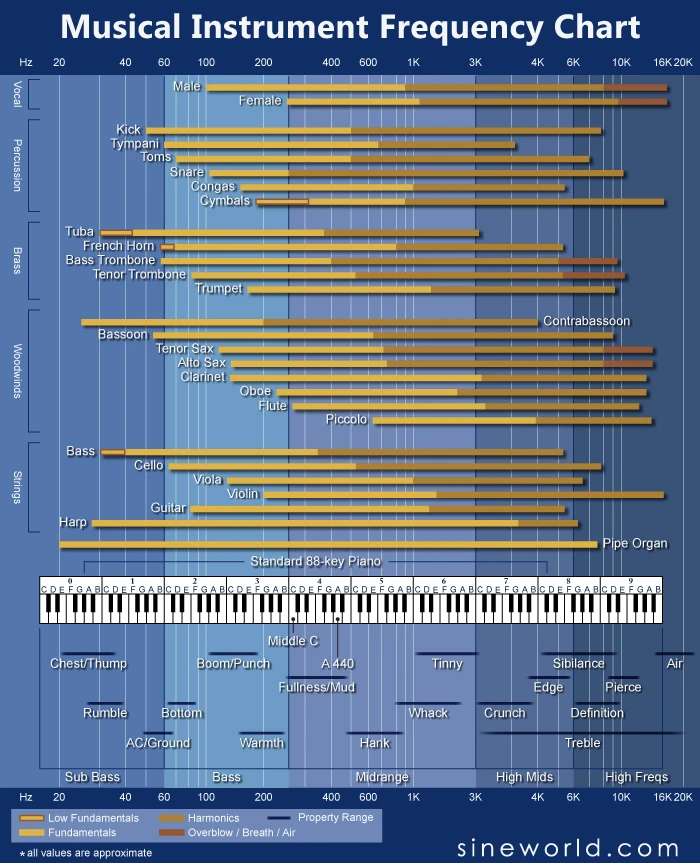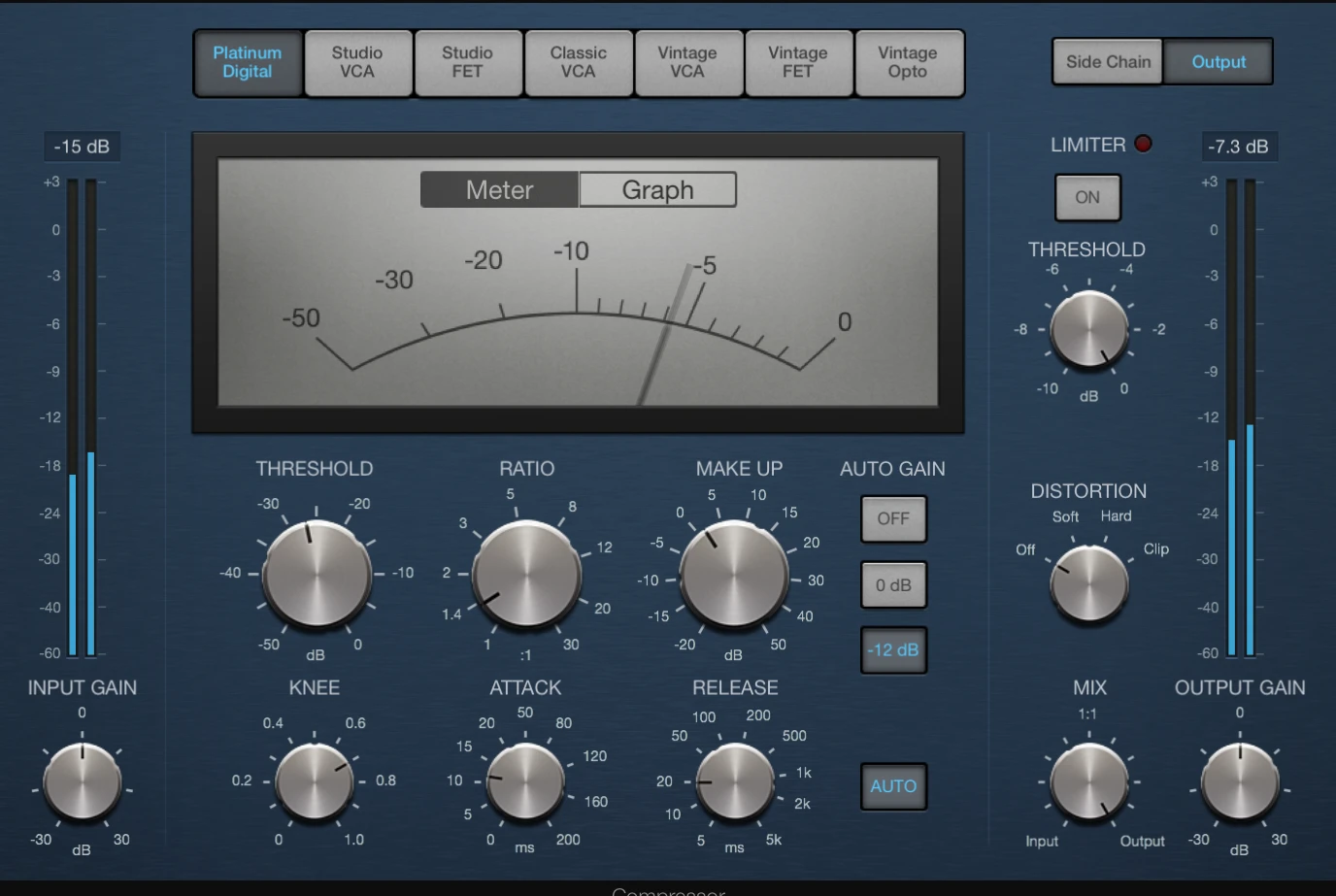When achieving optimal dynamic control and balance in Audio Production, understanding the concept and importance of the compression threshold is crucial. The threshold is a key parameter, a setting which, at the right level, audio engineers and producers can effectively shape the sound they want to create.
In this blog, we will delve deep into the concept of Compression Threshold, exploring its impact on Audio Compression, factors to consider when setting the threshold, and its applications in various audio production scenarios.
The Threshold is a fundamental parameter in audio compression that will determine the level at which your Audio Compressor begins to reduce the gain of the incoming audio signal. The threshold acts as a reference point, dictating when the compression process is to be triggered, surpassing which the process engages and starts to compress the signal.
Its value is always set in decibels (dB). A lower threshold value will generally compress a larger portion of the signal, affecting a greater range of dynamics. On the other hand, a higher threshold will try to limit the amount of compression, as it will only work on specific peaks that are louder than the preset Threshold value.
Skillfully evaluating the right value of the threshold can greatly assist Audio Engineers and Music Producers in enhancing the impact of their sound, ensuring that they create professional results.
As the Threshold determines when the process of compression starts and stops, it directly affects the range of audio dynamics affected by the process. Whenever the audio signal exceeds the set threshold, the compressor engages to reduce the gain.
If you set a smaller value of Threshold, you will be affecting a more significant portion of the audio signal, resulting in a more controlled and consistent dynamic range.
While a higher threshold level will limit the compression as only the loudest peaks will be affected, preserving the natural dynamic range from the original audio track.

If you set a lower threshold value, you will proportionally increase the gain reduction that will be applied to the audio track resulting in an aggressive compression. While if you set a higher threshold value, you will be reducing the amount of gain reduction, resulting in a more transparent and subtle compression effect.
The threshold level will help you to manage the transient peaks in your audio signal if you set the level slightly above the peak levels. This will help you tame the peaks, prevent them from overpowering the final mix, and provide a more consistent mix in which no individual elements dominate.

The threshold levels you set will play an important role in the overall character of the output audio. You should know that lower threshold levels will create a more compressed and controlled sound, generally suitable for genres requiring a tight and upfront presentation.
While a higher value of the threshold level will give you a more open and dynamic sound, including the natural tone of the sound.
Before you start tweaking the threshold, you should first consider the original dynamic range of the audio material. Figure out the difference between the softest and loudest parts of the track, and then if you find the dynamic range to be high, you should move towards a lower threshold to control the peaks. Otherwise, a higher threshold can be sufficient so that you can preserve the existing dynamics.
While working with Threshold on an Audio Compressor, one of the most important things for a music producer is to know the kind of genre and the style of music they want to create, as different genres and musical styles require varying dynamic characteristics.
For example, genres like jazz usually require a wider dynamic range for the music to breathe and express its nuances. At the same time, the case may be different for genres like rock music which usually needs more control to ensure a more consistent sound.
Spending years in the Audio Industry has taught us enough to know that each instrument and sound source will have its unique properties. A particular instrument might have a sharp transient, requiring you to set a lower Threshold level value for an aggressive compression.
Vocal compression, on the other hand, is usually subtle as one needs to maintain their natural tone. As Sound Professionals, you will always have to consider the specific characteristics of the instrument or sound source before you set a threshold.

There is almost zero chance that a Music Producer will use only a particular audio track alone, as they will most certainly need to use the track with other instruments and vocals. This is why you should always consider the context of the mix and have clarity over it before you work on the compression.
You must pay attention to the other elements you will put in the mix to ensure that compression does not overshadow or overpower other instruments or vocals in the final mix. When setting the Compression Threshold, try to balance controlling the dynamics and maintaining a cohesive and balanced mix.
Each Music Producer will require a particular sound character for a particular track they are working on. To get the right results, you will have to get the right sound character, for which you will have to consider the threshold levels.
You will have to figure out whether you want a more transparent and natural sound by setting the threshold to higher levels or something more heavily compressed and controlled that can be produced using a lower threshold and higher gain reduction.
Forgetting the context of where you work is going to be heard the most is one of those mistakes that even some veterans make. You should always consider the intended playback environment when setting the threshold.
Different playback environments will have different acoustic characteristics and listening conditions. For example, headphones make music sound different from a car system. This is why we recommend you adjust the threshold levels to suit the playback environment to deliver the best listening experience to your audience.
Step 1: As mentioned earlier, the first step to setting the threshold levels is understanding the original audio material. Try to realize the dynamic range and see what peaks need tamed. These are the parts of the tracks that exceed the desired volume level and may require compression.
Step 2: Talking from years of experience in the field, we recommend that you always start by setting the compressor's threshold at a moderate level.
We feel that a good starting point is to set the threshold slightly above the average level of the original audio material.
Step 3: As the compressor gets to work, you should watch the Gain Reduction Meter and see how the compressor works on the loudest sections of the signal.

Step 4: Now that you know how your compressed signal sounds, you can adjust the threshold levels accordingly. Note- You should put undue attention to any artefacts that are already present or are added because of the compression to the track. Artefacts can include pumping, breathing, or unnatural changes in the timbre of the audio. Adjust the compression threshold to get the desired result if undesirable elements are present.
Step 5: Once you have compressed the audio, you should perform A/B comparisons by toggling the compression on and off.

Listening to compressed and uncompressed tracks simultaneously will help you figure out the impact of the compression more definitively and see if the compression is working the way you want it to work or is harming the tone.
The Threshold level is mostly used to balance the uneven audio in untreated audio signals. No matter what instrument you use or how seasoned you are as a vocalist, you will find unwanted volume variations in your sound. This particularly happens when different audio sources are blended.
These variations can be treated by setting the appropriate Compression Threshold levels to create a more consistent sound.
By setting a lower threshold, you will be able to emphasize the transients and initial attack of audio signals, allowing you to enhance the punch and impact of instruments such as drums and percussions.
Sustain is often added to the existing music to enhance the duration and decay of notes, creating a more pronounced and controlled sound. This can be achieved by rising the threshold.
If the compressor engages less frequently, the natural decay of the sound will be preserved, resulting in a longer sustain that can add depth and richness to the sound.
When a music producer or a sound engineer wants to increase or decrease the emphasis of particular frequency ranges, they can move towards tweaking the Compression Threshold.
By applying compression selectively to different frequency bands, Sound Professionals allow you to shape the tonal balance of the sound. A lower threshold in the low-frequency range will allow you to tighten and control the low-end frequency of the audio track, and a higher threshold in the high-frequency range will smoothen out the harshness to bring a more balanced tone.
Not just music, Compression Threshold is often used by Sound Engineers to add special effects. By setting a very low threshold with heavy compression, Sound Professionals can aid their soundtrack by achieving a pumping effect where the volume will fluctuate in sync with the music, creating a sense of energy and movement. This effect is often used in genres like EDM and electronic music.
Unwanted artefacts and background noise often irritate sound engineers. To remove/reduce these, they usually set the threshold above the noise floor so that the compressor engages and reduces the noise level.
The compression Threshold set below the noise level will effectively minimize the presence of these artefacts in the final mix of movies, TV shows, music, and podcasts.
The Compression Threshold is a parameter in Audio Compression that can be an extremely powerful tool that gives Sound Professionals control and the ability to shape their sound in the desired way. By setting the threshold correctly, Audio Engineers and Music Producers can get the right dynamic range and change the sound's character, add effects, and remove artefacts.
Talking from our experience, we can say that working with Compression thresholds will require some patience. You will have to make your way through experimentation and using your ears and other tools to find the right threshold settings for a given audio source or project to achieve professional-quality sounds.
♥ - Joseph SARDIN - Founder of BigSoundBank.com - About - Contact
Be the first to give an opinion!